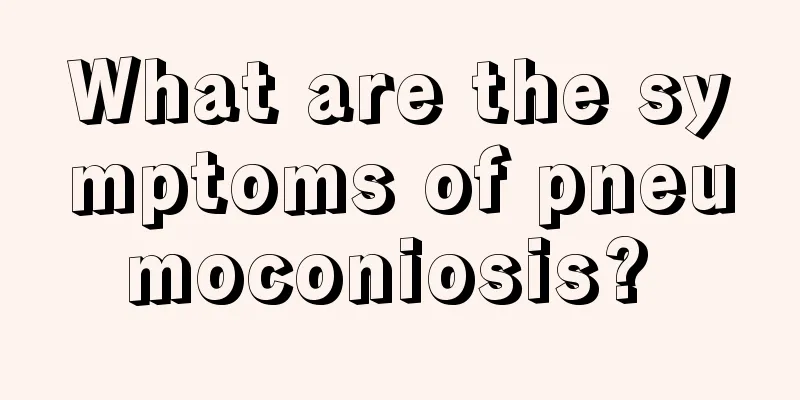What are the symptoms of pneumoconiosis?

|
Pneumoconiosis is a relatively common respiratory disease in daily life. It poses a huge threat to human health. It occurs mostly due to reduced body resistance and impaired lung function in clearing foreign bodies. Therefore, early detection and treatment of this disease are necessary. So what are the symptoms of pneumoconiosis? In fact, there are 5 symptoms, the first of which is coughing. 1. Cough: In the early stage of pneumoconiosis, the cough is not obvious. However, as the disease progresses, pneumoconiosis patients often have chronic bronchitis, and late-stage patients are often prone to lung infections, which can significantly aggravate the cough. 2. Coughing up phlegm: Coughing up phlegm is a common symptom. Even in the case of rare coughing, pneumoconiosis patients will have phlegm. The reason is the continuous removal of dust by the respiratory system. Generally, the amount of phlegm is not much. It is mostly gray and thin sputum. The sputum of coal workers' pneumoconiosis patients is mostly black, in which coal dust particles can be clearly seen, which is mostly caused by ischemic dissolution and necrosis of large fibrosis lesions. Asbestos bodies can be detected in the sputum of asbestos-exposed workers and asbestosis patients. If combined with pulmonary infection and chronic bronchitis, the amount of sputum will increase significantly. 3. Chest pain: There is often no correlation or parallel relationship between chest pain and the stage and clinical manifestations of pneumoconiosis, and it is more common in patients with silicosis and asbestosis. The location of chest pain varies and often changes, and is mostly localized; the pain is usually not severe. Pneumoconiosis patients generally complain of dull pain, which is also described as bloating, stabbing pain, etc. Chest pain is partly caused by the involvement of fibrotic lesions, especially pleural fibrosis and pleural thickening, traction and tension of bullae under the visceral pleura, etc. 4. Dyspnea: Dyspnea is an inherent symptom of pneumoconiosis. The breathing difficulties of pneumoconiosis patients are related to their condition. As the degree of lung tissue fibrosis increases and the effective breathing area decreases, the breathing difficulties become more severe. 5. Hemoptysis: It is relatively rare. It may be caused by long-term chronic inflammation of the upper respiratory tract, resulting in mucosal vascular damage, with a small amount of blood in the sputum. It may also be caused by the dissolution and rupture of large fibrotic lesions and damage to blood vessels, resulting in a large amount of hemoptysis. It is generally self-limited. Pneumoconiosis combined with pulmonary tuberculosis is the main cause of hemoptysis. |
<<: What should I do if the tarsal plate positioning double eyelid is not done well?
>>: What causes numbness in my left arm?
Recommend
Spread after thyroid puncture
Thyroid puncture is beneficial to our body, and t...
What does it feel like to fall in love at first sight
Some people believe in love at first sight, while...
Is moxibustion harmful to the ears?
Many people in our lives suffer from blood vessel...
The role and function of calcium, magnesium and zinc
We all know that human growth and development req...
Eat a durian a day
Some people like to eat durian, so they will buy ...
How to relieve the discomfort of panic
I believe that everyone has experienced panic in ...
Will common early symptoms of prostate cancer lead to metastasis?
Since the early symptoms of prostate cancer are v...
What is the reason for rapid loss of potassium
We all know that the normal life activities of th...
Will stomach pain cause chest tightness?
Many young people suffer from stomach problems. D...
Can mugwort be used to bathe infants and young children?
The baby's skin is very delicate, so skin dis...
"Blacklist" of items that are prohibited in the car in summer!
Lighter Hazard Index: ★★★★★ Disposable lighter. M...
How long can you live after the second thyroidectomy
How long a patient can live after a second thyroi...
What is the treatment for epilepsy
Epilepsy is still a medical problem, because ther...
Symptoms of postpartum autonomic nervous system disorder
Many pregnant women cannot regulate their bodies ...
What kind of tea is good for your eyes?
If the eyes are injured, they need treatment as s...









